SAR AW139 Loss of Control – Inflight During Positioning Flight (Babcock MCS España EC-NEH)
On 12 June 2019, Leonardo AW139 EC-NEH, a Search and Rescue (SAR) helicopter, operated by Babcock MCS España (since sold to Ancala Partners and now trading as Avincis), was damaged during a Loss of Control – Inflight (LOC-I) and a subsequent forced landing.
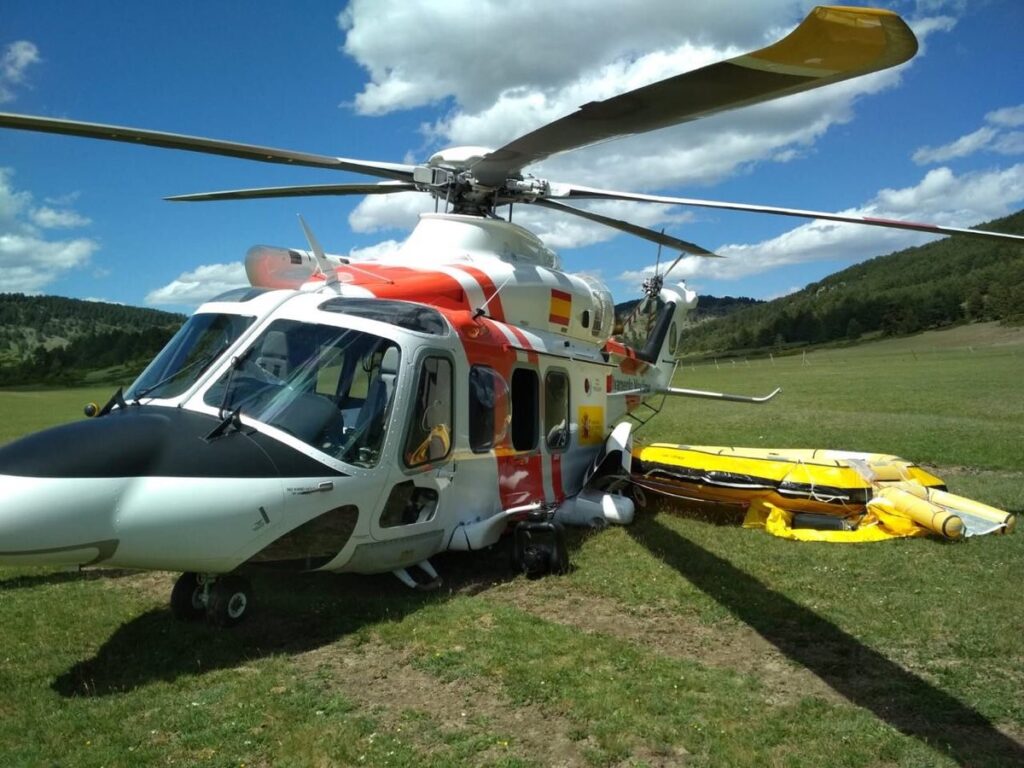
Babcock Leonardo AW139 EC-NEH After Forced Landing (Credit: via CIAIAC)
The Accident Flight
According to the Spanish Comisión de Investigación de Accidentes e Incidentes de Aviación Civil (CIAIAC) safety investigation report, released in June 2023, the helicopter was being positioned VFR from the Babcock Spanish HQ at Mutxamel Aerodrome (Alicante) to the Spanish Maritime Rescue and Safety Society (SASEMAR) El Musel SAR base (Gijón). The helicopter had recently been purchased by Babcock, only being registered on 30 May 2019.
The only person onboard, for what was expected to be a 3.5 hour flight, was the single pilot. The pilot had 6,408 hours of experience, 1,759 on type. The AW139 hours were all with Babcock, accumulated in the previous 11.5 years.
Fifty three minutes into the flight the helicopter was in cruise over Serranía de Cuenca “with the Flight Director’s IAS [Indicated Airspeed], LNAV [lateral navigation] and ALT [altitude hold] modes coupled” and the ATT stabilisation system active. At this point, there was what the pilot reported as a “destabilisation of the helicopter”.
He noticed strong turbulence which destabilised the helicopter, placing it into a nose-up position, rolling to the right almost 90°, which he managed to recover. During this manoeuvre, he noticed air coming from his left. Later, when he could turn his head, he found that this was due to a rear window that had come off on that side. In addition, there was the failure of two engines that led him to initiate an autorotation and an emergency landing. When he landed, he became aware that the window on his side was also missing.
The flight recorders confirmed that at 13:30:50, the helicopter was flying straight and level at 135 kt IAS (152 kt ground speed) at an altitude of 6,537 ft (1,142 ft AGL) with a heading of 331° when the destabilisation began. It reached its maximum development three seconds later.

Reconstruction of Babcock Leonardo AW139 EC-NEH Loss of Control – Inflight Event (Credit: via CIAIAC)
- Roll was increasing to the left until, at 3 seconds (13:30:53), it reached a maximum value of -140°.
- Yaw underwent variations in both directions with maximum opposite rates of variation of +70°/s and -31°/s.
- Pitch ranged from -12° to +22°.

After the maximum destabilisation of the helicopter at 13:30:53, with a roll to the left of -140°, the pilot tried to regain control of the helicopter. Rate of decent peaked at 6,500 ft/min at 13:30:55 with a engine overspeed and the main rotor reaching 115% NR.
Within six seconds after the start of the event, the failure of the electronic controllers of the two engines (EEC) was recorded, which changed the mode of operation from automatic (AUTO) to manual (MAN).
At 13:31:01, 11 seconds after the start of the event, the helicopter recovered its attitude. The speed had dropped to 75 kt IAS, course changed to 239° and 473 ft in altitude had been lost.
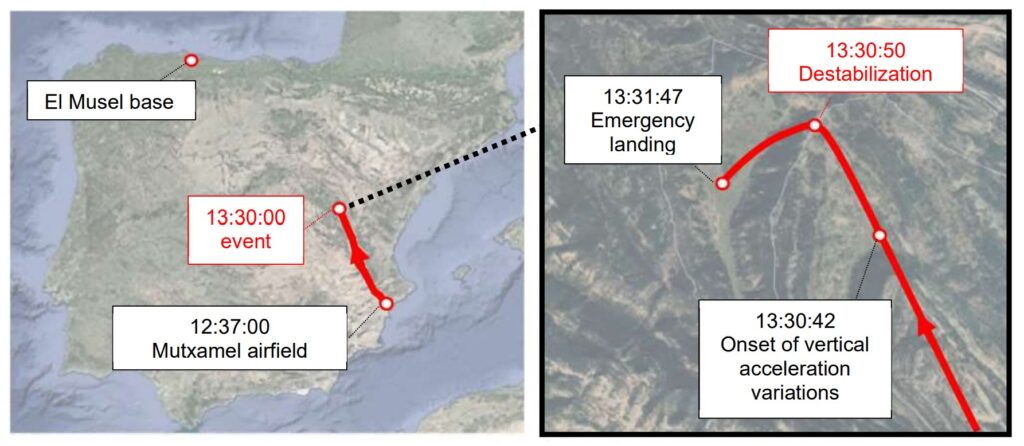
There was a descent that lasted 46 seconds until a controlled run-on landing in open countryside at 13:31:47 with a 57 m ground roll. The pilot was uninjured.
The ground, grassy and wet, had undulations and sinkholes.
Babcock Leonardo AW139 EC-NEH After Forced Landing (Credit: via CIAIAC)
The aircraft had damage to the left main landing gear, which had collapsed.
Sponson Damage Babcock Leonardo AW139 EC-NEH (Credit: via CIAIAC)
The left life raft was found deployed next to the helicopter.
Deployed Life Raft Babcock Leonardo AW139 EC-NEH (Credit: via CIAIAC)
Two of the helicopter’s eight windows, one on each side, had come off. The left-side window (of the passenger cabin) was located inside the helicopter with the curvature reversed. The right-side window (cockpit), on the captain´s side, was not found.
Damage to Babcock Leonardo AW139 EC-NEH (Credit: via CIAIAC)
Due to the remoteness of the landing site, the damaged helicopter had to be recovered by a Spanish military Boeing CH-47 Chinook (VIDEO).

CH-47D HESLO Recovery of Babcock Leonardo AW139 EC-NEH (Credit: Spanish Army)

CH-47D HESLO Recovery of Babcock Leonardo AW139 EC-NEH (Credit: Spanish Army)
EC-NEH was rebuilt and re-entered service in 2021.
CIAIAC Analysis of the LOC-I
Examination of flight data indicated that the helicopter had been flying through turbulent air shortly before the loss of control. The Automatic Flight Control System (AFCS) had been compensating, mostly with pitch changes, for what CIAIAC considered as light turbulence for c25 seconds. At 13:30:42 there was a a change in vertical speed from 0 to -700 ft/min over two seconds, “which is believed to have been caused by the helicopter’s exit from the rising air stream”. The helicopter’s pitch changed from +2° to -5º at 13:30:44 before…
The automatic flight system produced an increase in the pitch angle up to +10°, reached at 13:30:47. These compensations saturated the linear actuators and produced the maximum reaction in the autotrim (2.5°/s) of the automatic flight system. In the next two seconds, the pitch angle decreased to -7° and a maximum vertical acceleration of -1.2 g was recorded. On the transverse axis, the helicopter remained stable, with a roll angle value maintained at around -2°.
At 13:30:50 the pilot activated the Force Trim Release (FTR), cancelling the helicopter’s AFCS and stabilisation system and reverting to manual control.
From this starting situation, the pilot induced abrupt and extreme actions on the controls (cyclic to the left, right pedal down and pulling up on the collective) which evolved into a loss of control which would reach its maximum three seconds later.
The main conclusion of the analysis of the pilot’s actions is that they were not related to the actual position of the helicopter and were not coordinated. At this point, the pilot’s description of the event becomes relevant, when he states that the helicopter was suddenly in a nose-up position with roll of +90°. This description indicates that the pilot was misperceiving his position in space. This is considered to be the most likely cause of the loss of control.
CIAIAC state that in the lead-up to the LOC-I workload was low which could indicate a low arousal state.
The analysis of the effects of this turbulence shows that it did not create abnormal variations or positions in the helicopter. The changes mainly affected the pitch angle, which underwent oscillations between -5° and +10°, and the vertical acceleration which recorded a maximum of 1.2 g. These values are not considered exceptional.
Investigators considered the possibility of a flicker vertigo, given the position and incidence of the sun on the main rotor.
This phenomenon has generated optical illusions in pilots who have suffered from it, and although the tests carried out during the investigation did not provide conclusive results, it is included in this analysis as one of the factors which could have affected the pilot.
CIAIAC concluded that:
The study of the loads and movements, in terms of intensity, frequency and directionality, generated by the turbulence prior to flight are not associated, from a physiological point of view, with the most known and common causes of disorientation. However, the pilot performed actions on the controls compatible with a state of misperception of his position in space.
They say “only explanation involves a possible combination of the following conditions”:
- A low activation state conditioned by the flight phase, the area where it was located, the lack of external stimuli and the low workload required by the flight at that time.
- Conditions with the light and the rotor consistent with a flicker vertigo.
- The changes in the pilot’s posture during the change of altitude process performed during turbulence [about 15 seconds earlier the pilot started to modify the reference altitude from 6,500 ft to 7,500 ft]
CIAIAC Analysis of the Window Detachments
The helicopter underwent complex and extreme dynamics that exceeded the helicopter’s certification limits.
JAR-29.351 established a side slip envelope at c140 kt (the speed during the event) of 45°. This value was exceeded, reaching an angle of 60°-70°.
Computational Fluid Dynamics (CFD) modelling showed:
The right side of the helicopter was subjected to suction, with the pilot’s window coming under the most pressure.
This is consistent with the loss overboard of that window.
The left side of the helicopter was subjected to overpressure, with the central window of the passenger cabin receiving the most pressure.
This is consistent with that window first reversing its curvature and then popping into the cabin.
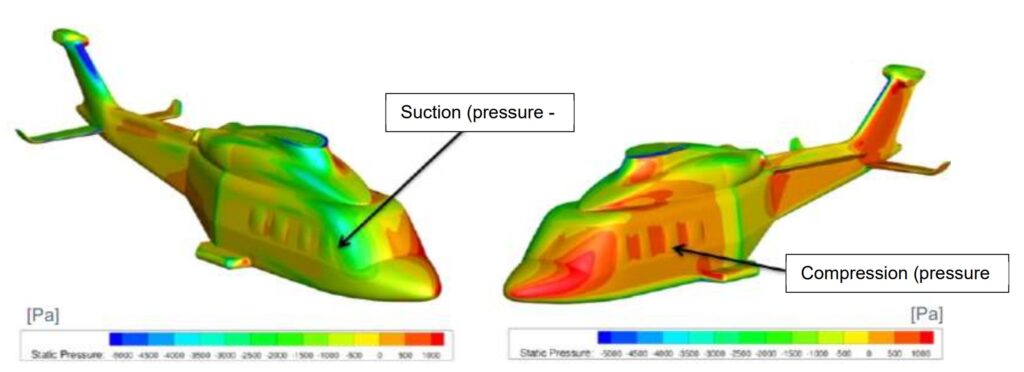
CIAIAC Analysis of the Engine Reversion to Manual Control
…the investigation was able to confirm, in both engines, an overspeed condition with the power turbines that created values typified as a critical failure of the EEC, which were detected by the two EECs, which caused the automatic change of the operating mode for both EECs.
This process, therefore, had two phases which explain why the pilot interpreted that the engines had stopped. The first phase has to do with the overspeed condition and the second with the critical failure.
The turbine overspeed condition…caused the engine protection system to enter into operation, minimising the flow of fuel supplied to the engine in an attempt to lower the N2 below 109%. Even though the protection system was working…N2 continued to increase. It is believed that [this was due to] a combination of the actions on the collective (which was lowered sharply from top to bottom in less than one second), together with the helicopter’s evolution (roll angle at about -79°, descending at a speed of -6,500 fpm, and a pitch angle of +22°).
This active state of the protection system was the reason that the pilot did not notice an effect on power when he pulled the collective at two seconds, because the fuel was being restricted to the minimum. Later, the pilot’s use of the collective did not have a response in the power because, at this time, the EEC being set to MANUAL disabled the control of the fuel through the collective.
This double condition was what led the pilot to misidentify that the engines had failed.
Because the pilot had not identified the switch to MANUAL, he was unable to perform fuel management through the ECL levers, which remained set in the FLIGHT position for the remainder of the flight.
In conclusion, the operation of the engines before, during and after the event was as expected, ruling out operational problems or any contribution to the accident.
CIAIAC Conclusions on Causes & Contributing Factors
The probable cause of the accident of the EC-NEH helicopter was a loss of control in flight following the disconnection of the automatic flight system through the FTR (Force Trim Release) switches and the assumption of manual control by the pilot. The loss of control was probably due to the pilot’s misperception of the helicopter’s actual attitude.
Our Observations
- Although the safety investigators seem to assume the use of the FTR was deliberate, there is no evidence that it was.
- There is no discussion of any special preparation for operating this flight single pilot.
Safety Resources
The European Safety Promotion Network Rotorcraft (ESPN-R) has a helicopter safety discussion group on LinkedIn. You may also find these Aerossurance articles of interest:
- Loss of Control, Twice, by Offshore Helicopter off Nova Scotia
- SAR Helicopter Loss of Control at Night: ATSB Report
- Fatal Night-time UK AW139 Accident Highlights Business Aviation Safety Lessons
- Automation Issues During Night SAR Training – Near CFIT
- Aerossurance Marks RAeS 150th Anniversary by Sponsoring Rotorcraft Automation Conference
- Technology Friend or Foe – Automation in Offshore Helicopter Operation
- Offshore Night Near Miss: Marine Pilot Transfer Unintended Descent
- North Sea Helicopter Struck Sea After Loss of Control on Approach During Night Shuttling (S-76A G-BHYB 1983)
- HEMS S-76C+ Night Approach LOC-I Incident
- NTSB Investigation into AW139 Bahamas Night Take Off Accident
- Night Offshore Training AS365N3 Accident in India 2015
- SAR AW101 Roll-Over: Entry Into Service Involved “Persistently Elevated and Confusing Operational Risk”
- Military SAR H225M Caracal Double Hoist Fatality Accident
- TCM’s Fall from SAR AW139 Doorway While Commencing Night Hoist Training
- Fatal Fall From B429 During Helicopter Hoist Training
- Hoist Assembly Errors: SAR Personnel Dropped Into Sea
- USAF Helicopter Hoist Training Accident
- Fall From Stretcher During Taiwanese SAR Mission (NASC AS365N2 NA-104)
- Fatal Taiwanese Night SAR Hoist Mission (NASC AS365N3 NA-106)
- Fatal Powerline Human External Cargo Flight
- SAR AW139 Dropped Object: Attachment of New Hook Weight
- Swedish SAR AW139 Damaged in Aborted Take-off Training Exercise
- Blinded by Light, Spanish Customs AS365 Crashed During Night-time Hot Pursuit
- Swedish Special Forces SPIES and Military SMS
- SAR Crew With High Workload Land Wheels Up on Beach
- ‘Procedural Drift’: Lynx CFIT in Afghanistan
- Italian HEMS AW139 Inadvertent IMC Accident
- HEMS AW109S Collided With Radio Mast During Night Flight
- Night Offshore Windfarm HEMS Winch Training CFIT (BK117C1 D-HDRJ)
- NH90 Caribbean Loss of Control – Inflight, Water Impact and Survivability Issues
- BK117 Offshore Medevac CFIT & Survivability Issues
- SAR Hoist Cable Snag and Facture, Followed By Release of an Unserviceable Aircraft
- Guarding Against a Hoist Cable Cut
- HH-60L Hoist Cable Damage Highlights Need for Cable Guards
- UPDATE 17 February 2024: Night Offshore Take-Off Loss of Control Incident
- UPDATE 18 February 2024: Night Offshore Helicopter Approach Water Impact
- UPDATE 13 July 2024: Fatal USCG SAR Training Flight: Inadvertent IMC
UK Air Accidents Investigation Branch (AAIB) issued their report on CHC Sikorsky S-92A EI-ICU, turbulence encounter resulting in overspeed, 5 nm ENE of City of Derry Airport (5 February 2023) on 13 July 2023.
The European Helicopter Safety Team (EHEST) has published: Safety Leaflet HE9 Automation and Flight Path Management


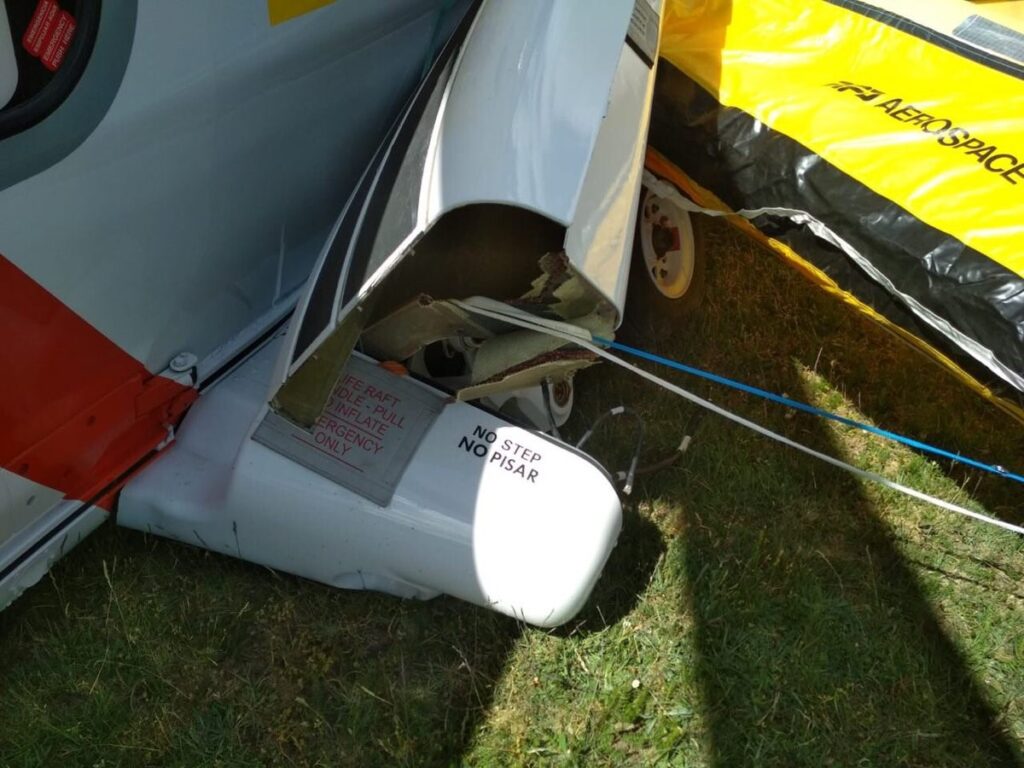
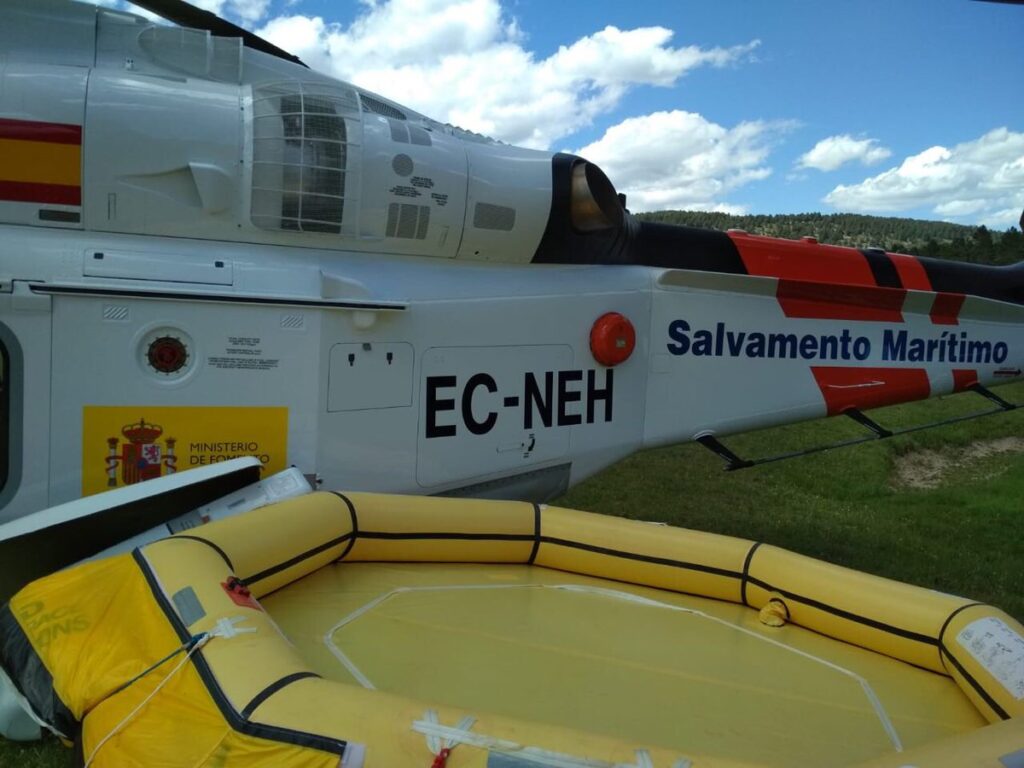


Recent Comments